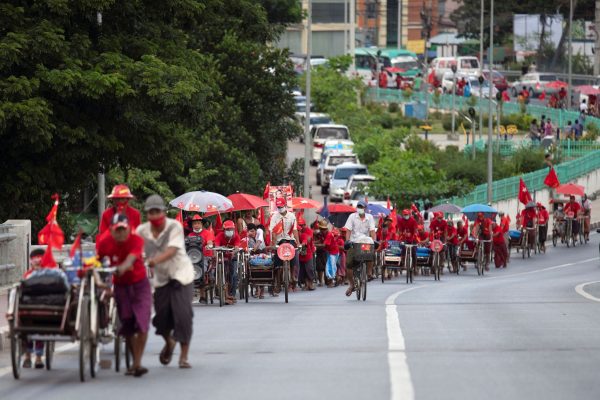In both areas her administration has been judged a disappointment. But those who knew Myanmar well had cautioned against too much optimism from the start. Myanmar was not ripe for the rapid flourishing of good governance and liberal democracy. Decades of rule by a brutal and paranoid junta had left the country with a decrepit economy, scarcely extant health and welfare infrastructure, unresolved ethnic conflicts and a bureaucracy and judiciary deeply infused with authoritarianism and corruption.
The reform project that culminated in landmark elections in 2010 and 2015 was stewarded by the military with one eye on its long-term interests. The democratisation process was carefully planned and sequenced to allow space for multiparty competition while giving the generals extensive prerogatives in areas of domestic policymaking — not to mention a veto over any constitutional reform that would inconveniently empower civilian politicians.
In this week’s lead article, David Steinberg emphasises the ambiguous significance of the 2020 polls, held amid a worsening local COVID-19 situation. Steinberg writes that what might emerge from the poll is ‘a “quasi-democratic” administration — a uniquely Burmese government tenuously balancing an amalgam of military, civilian and diverse ethnic minority interests’.
The relationship between the civilian NLD government elected in 2015 and the military brass has been marked by tension and suspicion. But there has been a toxic unanimity in one area: ensuring impunity for the gross abuses of human rights perpetrated by the military in the western state of Rakhine. Violence against the Rohingya Muslim minority has created a humanitarian crisis in neighbouring Bangladesh, a crisis whose effects also spill over to Myanmar’s ASEAN neighbours.
The Rakhine crisis is only the most tragic example of a broader problem of inter-ethnic politics and the 2020 election results could well reveal more troubling trends. The NLD’s ham-fisted dealings with minority populations have increased its electoral reliance on the ethnic Bamah-majority heartland; as Steinberg concludes, ‘the NLD is increasingly regarded as the party of the majority Bamah, not the country’s other 40 per cent’.
One need not look that far afield to see the hazards of a ruling party putting all of its chips on one ethnic or religious group’s support. In Malaysia, Prime Minister Muhyiddin Yassin has discarded longstanding norms of including Chinese and Indian-based parties to govern with the support of Malay Muslim-based coalition partners. In Indonesia, President Joko Widodo has supported efforts to politically marginalise Islamists, raising worries of polarisation and corner-cutting on civil liberties.
Still, that Myanmar’s reform momentum has waned should not divert attention away from how far the country has come since the dark days under junta rule. The opening up of Myanmar society to the outside world, the welcoming of foreign investment and even the modest expansion of political freedom have transformed countless lives for the better.
It is critical that none of these achievements are imperilled by the COVID-19 crisis now hitting the country hard. Myanmar’s earlier luck with the pandemic has run out. To its credit, the NLD government has sought to build the country’s health infrastructure from a low base. But the country still has among the most stretched health system capacity in the region, and service providers will be quickly overwhelmed if and when case numbers spiral further out of hand. And the government has limited ability to compensate citizens for income lost during a lockdown.
Regional partners and both western and multilateral donors have stepped in to support the public health response — as has China, which has specifically provided election-related support.
After the election, the agenda for western governments ought to be for continued engagement with Myanmar’s civilian leaders, and support for the parts of the state working well. The consequence of disengaging from Myanmar out of weariness with failures of reform would likely be a government in Naypyidaw that is less democratic, less accountable, and dependent for economic and diplomatic sustenance elsewhere. Nobody has an interest in that, least of all the people of Myanmar.
The EAF Editorial Board is located in the Crawford School of Public Policy, College of Asia and the Pacific, The Australian National University.

